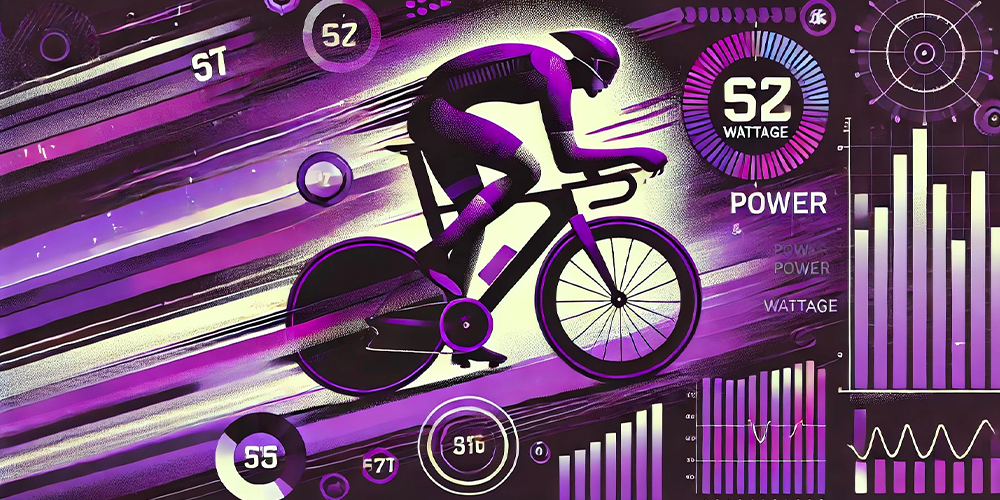With the Tour de France in full swing, we have the opportunity to closely observe the capabilities of the best cyclists in the world. Among the various parameters that determine a cyclist’s success, power, measured in watts, is one of the most important. But what are the average watts that distinguish an amateur cyclist from a professional? Let’s analyze the power and speed data and see how these influence road performance, with recent examples from the Tour de France stars.
What is power in cycling?
Power in cycling is the measure of the work done by the cyclist to move the bicycle. It is measured in watts and represents the combination of force and speed. Power meters, mounted on the bike, record this data in real-time, allowing cyclists to monitor and optimize their performance.
The Importance of Training with Power (Watts)
Average watts of a good cyclist
The average watts a cyclist can maintain depend on various factors, including training level, body weight, and course conditions. Here is an overview of the average watts for different categories of cyclists:
- Amateur cyclists – A well-trained amateur cyclist can maintain an average power of about 2.5-3.0 watts per kilogram of body weight (W/kg) for an hour. For example, a 70 kg cyclist could produce between 175 and 210 watts on average.
- Advanced amateur cyclists – Advanced level cyclists can maintain an average power of about 3.5-4.5 W/kg. A 70 kg cyclist could therefore produce between 245 and 315 watts on average.
- Professional cyclists – Professional cyclists, like those competing in the Tour de France, have exceptional capabilities. They can maintain an average power of about 5.0-6.0 W/kg during a long climb. For example, a professional cyclist weighing 70 kg could produce between 350 and 420 watts on average.
Examples of exceptional performances
- Tadej Pogačar maintained an average power of about 410 watts for nearly 30 minutes during the decisive time trial of the 2020 Tour de France, which played a crucial role in his victory.
- Jonas Vingegaard, winner of the 2022 Tour de France and one of the favorites for the 2024 edition, has demonstrated he can maintain an average power of about 6.2 W/kg on long climbs, like the Col du Granon.
Speed and Power
A cyclist’s speed is influenced not only by the power generated but also by external factors such as wind, terrain gradient, and aerodynamic resistance. However, high average power generally translates into higher speeds, especially in constant conditions.
Power-Speed relationship
- In flat and windless conditions, a cyclist generating 250 watts can maintain an average speed of about 30-32 km/h. Headwinds can significantly reduce speed despite constant power.
- Uphill, speed decreases, but the power-to-weight ratio becomes more critical. A cyclist generating 350 watts on a 5% incline can maintain a speed of about 15-18 km/h, depending on the gradient and body weight.
Importance of power in training programs
Monitoring power is essential to optimize training and improve performance. The 2PEAK training plan allows you to automatically adjust your cycling power zones. By choosing this feature in the settings, your training zones will be constantly adjusted based on your training sessions, always reflecting your current fitness level.
Coaches and cyclists use power data to:
- Customize training programs: Based on power zones, cyclists can train specifically to improve endurance, speed, and maximum power.
- Evaluate progress: Power data allows for monitoring improvements over time and adjusting training accordingly.
- Plan race strategies: Knowing your power-generating capacity helps plan race strategies, such as when to attack or how to manage energy during a long stage.
Conclusion
Power, measured in watts, is a crucial indicator of a cyclist’s abilities. Maintaining high average watts is synonymous with high performance and endurance, fundamental elements for success in cycling competitions like the Tour de France. Understanding and monitoring your power allows cyclists of all levels to improve their performance, making cycling an increasingly scientific and data-driven sport. Whether you are an amateur or a professional, knowing your average watts and working to improve them can make the difference between a good performance and a victory.

